

 Aroma wines and structure wines
Aroma wines and structure wines
Sometimes a wine has a very small nose, does not smell much. We sometimes say a discreet or shy nose. Is that always bad? There is so much talk about smelling the wine, swirling your glass so that the aromas open up, dipping your nose deep into in the glass. One can easily get the impression that it is only the nose that counts.
But is that really the case?
Not really. When you drink the wine with food, it is the taste that is most important. Which is, of course, partly based on the nose. But it is important to remember, one should not judge a white wine by its nose (aroma, smell, bouquet,…) alone.
We often divide wines into two different categories: aroma wines and structure wines.
So what is a “structure wine”?
Structure wines are a group of (mostly white) wines that have a surprisingly small nose but which we still think are of the highest quality.
Their opposite is aroma wines.
The aroma wines provide more instant satisfaction. They are often made from aromatic grape varieties such as sauvignon blanc, riesling, muscat and others. They have an intense nose, but often a fairly light body. The taste can also be intensely aromatic but often quite short. These are wines that can often be easily recognized. You immediately get a lot of taste sensations, without much effort so to speak.
For example, think of wines such as Sancerre, Alsace and Mosel. Or albariño from Spain, torrontes from Argentina, chenin blanc from South Africa, riesling and sauvignon blanc from New Zealand. White wines from Etna. Many arneis from Piedmont. And so on.
Structure wines, on the other hand, are just the opposite. The nose is “discreet” (quite small) but the taste is full, sometimes fat. There is a mouthfeel, a “structure”, maybe some tannins or austerity, and the taste stays with you for a long time. The taste may not be as intense and readily available as for the aroma wines, but it is more extensive and longer. These wines demand more of your attention. Don’t dismiss them just because the nose is small and the character not immediately apparent. These wines are a bit more “intellectual”, wines that encourage some reflection.
Structure wines can be wines from grapes such as grenache blanc, maccabeu, marsanne, vermentino… Many white wines from the Languedoc and the Rhône Valley have this style. And also some chardonnay wines (though not Chablis). Or Bordeaux with some barrel ageing and a good dose of sémillon. White wines from Rioja. Etcetera. Many older white wines develop in this direction as well.
Structure wines deserve more recognition!
What do you think about our categorisation into aroma wines and structure wines? Send us a comment!
Time for a wine travel reminder!
You still have the chance to book yourself on a wonderful wine tour. There are places left on some of the tours. See the program next to this text.
Chile-Argentina is fully booked. Instead, come to New Zealand, the trip that had everyone amazed and dazzled this year when we did it for the first time. Or to South Africa, this wonderfully beautiful and friendly wine country. Wouldn’t it be nice to escape the winter for a few weeks?
Travel to the world’s wine regions with the wine experts and the wine tour specialist.
By the way, you can read in the Brief about that we just won OIV’s (International Organization for Vine and Wine) award for our latest book, on the Languedoc-Roussillon. You can’t get better companions on your wine tour than BKWine.
Enjoy the Brief,
Britt & Per
PS: Recommend to your friends to read the Brief !
– – – – –
What’s on at BKWine Tours
2019
- Champagne, September 11-15, 2019
- Bordeaux, October 2-6, 2019
2020
- Chile and Argentina, January 20 – February 2, 2020
- South Africa, February 15-23, 2020
- New Zealand, March 9-24, 2020
- More to come
For more information please contact us on email or on phone (we’re on French time), or go to our wine travel site on www.bkwinetours.com!
We also make custom designed wine tours – on-demand tours for you and a group of friends, for your company (maybe to scout new winegrowers?), for a special event… We can combine winery visits and wine touring with other activities: gastronomic workshops, visit to an oyster farm, truffles hunting, cheese making, and more. More info on the custom designed and bespoke BKWine wine tours and travel here!
Read our book(s)
We have written several wine books, nine at the last count. One of them has been translated to English; the others are (so far) only available in Swedish. This is the one that is available in English: Biodynamic, Organic and Natural Winemaking, Sustainable Viticulture and Viniculture
All our books are on wine, but on different subjects: wines of the Languedoc, wine growing and wine making, the wines of France, Tuscany, Bordeaux, Piedmont, Burgundy, Champagne. Several have won prestigeous prizes and awards. Read more on our wine books.
From the World of Wine
In Brief
In short, news and stuff from the world of wine.
Fredholm’s Vineyard receives medals again
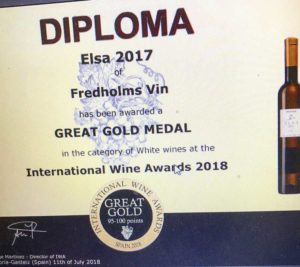 We congratulate Fredholm Vingård! It is not often we have the opportunity to write about a Swedish wine winning medals internationally… This small winery in the south of Sweden has once again obtained medals in an international wine competition.
We congratulate Fredholm Vingård! It is not often we have the opportunity to write about a Swedish wine winning medals internationally… This small winery in the south of Sweden has once again obtained medals in an international wine competition.
Elsa, a white wine made from the grape solaris, received a gold medal and the red wine Cid, made from rondo and the very unusual siramé grape, had a silver medal in the International Wine Awards Spain 2019, a wine competition which took place in Rioja. 2,540 wines participated from more than 30 countries. Cid will be released this winter and Elsa can already be found at Systembolaget and selected restaurants in Sweden, says winemaker Pär Fredholm. Read more: fredholmsvin.se
Does the shape of the fermentation tank really matter?
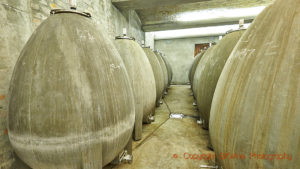 We’ve all seen them. (Or perhaps not.) The egg-shaped tanks in concrete or in terracotta. A few years ago, they were a sensation, now it feels like every other winemaker is investing in at least one. But does the shape and material of the fermentation tank really play a role in the character of the wine? A Chilean researcher has investigated the matter. She fermented must from sauvignon blanc in four different types of tanks: one ordinary cylindrical stainless-steel tank, an egg-shaped concrete tank, an egg-shaped tank in polyethylene and a jar made of terracotta. When tasting the four different wines, it was difficult to notice any difference. But in a technical analysis of the wines, the following emerged: The wines from the egg-shaped tanks had more residual sugar than the others, 1.75 grams/l versus 1.36 g/l. The concrete tank gave a slightly higher pH (~less acidity/freshness), 3.22 versus 3.15. The steel tank took five days longer to ferment and got a slightly higher content of volatile acidity. Interesting results, but who knows, maybe the result would be completely different with another grape? Read more on the tank experiment
We’ve all seen them. (Or perhaps not.) The egg-shaped tanks in concrete or in terracotta. A few years ago, they were a sensation, now it feels like every other winemaker is investing in at least one. But does the shape and material of the fermentation tank really play a role in the character of the wine? A Chilean researcher has investigated the matter. She fermented must from sauvignon blanc in four different types of tanks: one ordinary cylindrical stainless-steel tank, an egg-shaped concrete tank, an egg-shaped tank in polyethylene and a jar made of terracotta. When tasting the four different wines, it was difficult to notice any difference. But in a technical analysis of the wines, the following emerged: The wines from the egg-shaped tanks had more residual sugar than the others, 1.75 grams/l versus 1.36 g/l. The concrete tank gave a slightly higher pH (~less acidity/freshness), 3.22 versus 3.15. The steel tank took five days longer to ferment and got a slightly higher content of volatile acidity. Interesting results, but who knows, maybe the result would be completely different with another grape? Read more on the tank experiment
Travel: The egg tanks on the picture are from South Africa. Join us on our wine tour to South Africa in February.
(New?) rules for natural wines?
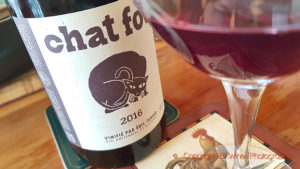 Natural wine is here to stay. And although the EU has said that there will be no official rules for this category, it does not prevent private groups from setting up their own. As, for example, Vinnatur in Italy (www.vinnatur.org) has done. Now Sébastien David, winemaker in Saint-Nicolas-de-Bourgueil in the Loire Valley, is trying to find like-minded growers who want to adhere to his proposal for rules for natural wines. There are no big surprises in the proposal. It requires organic cultivation (but certification is not mandatory!), manual harvest, fermentation only with natural yeast, “no” additives allowed except a maximum of 30 mg of sulphites per litre added at bottling. This must be clearly marked on the label. There will be two types of logos to put on the bottle. Both says Vin Nature and either “<30 mg/l sulphites added” or “no sulphites added”. In addition, it is prohibited to use “brutal techniques” during vinification, such as filtration (!), flash pasteurisation, reverse osmosis and thermo-vinification. We guess that temperature control during the fermentation is allowed, and no doubt spraying in the vineyard with copper and sulphur too. But that’s pretty much all. Read the description here: Charte Vin Naturel (pdf).
Natural wine is here to stay. And although the EU has said that there will be no official rules for this category, it does not prevent private groups from setting up their own. As, for example, Vinnatur in Italy (www.vinnatur.org) has done. Now Sébastien David, winemaker in Saint-Nicolas-de-Bourgueil in the Loire Valley, is trying to find like-minded growers who want to adhere to his proposal for rules for natural wines. There are no big surprises in the proposal. It requires organic cultivation (but certification is not mandatory!), manual harvest, fermentation only with natural yeast, “no” additives allowed except a maximum of 30 mg of sulphites per litre added at bottling. This must be clearly marked on the label. There will be two types of logos to put on the bottle. Both says Vin Nature and either “<30 mg/l sulphites added” or “no sulphites added”. In addition, it is prohibited to use “brutal techniques” during vinification, such as filtration (!), flash pasteurisation, reverse osmosis and thermo-vinification. We guess that temperature control during the fermentation is allowed, and no doubt spraying in the vineyard with copper and sulphur too. But that’s pretty much all. Read the description here: Charte Vin Naturel (pdf).
World’s vineyard surface increasing slightly. And wine? Read the stats carefully!
It can be tricky to read statistics on viticulture in different countries. It is important to know whether the statistics apply to both grapes grown for wine production and for eating. The world today has 7.4 million hectares of grapes. Five countries account for 50% of the surface: Spain (13%), China (12%), France (11%), Italy (9%) and Turkey (6%). China has a large acreage of vines but does not make much wine. In fact, 35% of the world’s table grapes come from China. 84% of China’s vineyards are destined to be table grapes. Just over 10% of China’s grapes are made into wine. Even less wine is made from Turkey’s 448,000 hectares, only 4%. Iran is another country with a large vineyard area, 153,000 hectares, but all of it is turned into table grapes or raisins. In the US, only 66% of the grapes grown will be fermented, the rest is table grapes. So, of these 7.4 million hectares in the world, 57% will be turned into wine, 4.2 million ha, 36% will be eaten as table grapes and 7% as raisins. Numbers from the recently concluded OIV world congress. Read more: State of the vitiniculture world market OIV (pdf)
Rioja puts more focus on origin and terroir, less on barrel ageing
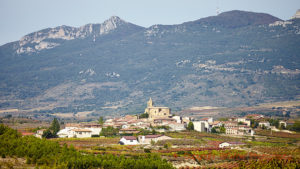 Rioja is experiencing something of a renaissance right now. To some extent, it is thanks to young, dynamic producers who think it is time to refresh Rioja’s image in the world. Therefore, we have recently seen several changes introduced. Many producers are now keener to put on the label the geographical location of the vineyard rather than a long ageing in barrel. Traditionally in Rioja, it has always been the ageing in oak barrel and in bottle that has given the wine its identity (crianza, reserva, grand reserva). Now you see the region – Rioja Alta, Rioja Alavesa or Rioja Oriental (formerly Rioja Baja, sometimes called Eastern Rioja) – on the label and often also the name of the village and maybe also, if the wine comes from a single vineyard, viñedos singulares. Rioja has a total of 65,326 hectares of vineyards. Rioja Alta is the largest sub-region with 27,347 hectares. The tradition of ageing the wines in oak barrels has made Rioja the wine region that has the largest number of 225-liter oak casks in the world, as many as 1.3 million. Read more www.riojawine.com
Rioja is experiencing something of a renaissance right now. To some extent, it is thanks to young, dynamic producers who think it is time to refresh Rioja’s image in the world. Therefore, we have recently seen several changes introduced. Many producers are now keener to put on the label the geographical location of the vineyard rather than a long ageing in barrel. Traditionally in Rioja, it has always been the ageing in oak barrel and in bottle that has given the wine its identity (crianza, reserva, grand reserva). Now you see the region – Rioja Alta, Rioja Alavesa or Rioja Oriental (formerly Rioja Baja, sometimes called Eastern Rioja) – on the label and often also the name of the village and maybe also, if the wine comes from a single vineyard, viñedos singulares. Rioja has a total of 65,326 hectares of vineyards. Rioja Alta is the largest sub-region with 27,347 hectares. The tradition of ageing the wines in oak barrels has made Rioja the wine region that has the largest number of 225-liter oak casks in the world, as many as 1.3 million. Read more www.riojawine.com
New Zealand’s vineyards vineyards grow, new numbers show
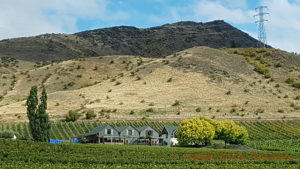 There is a new report on New Zealand’s vineyards and grapes. The area has increased by 2% and the country now has 38,680 hectares (~a third of Bordeaux) of which 30,921 hectares are white grapes and 7,758 hectares are red grapes. Sauvignon blanc is still the most important grape with 26,850 hectares, which is 69% of the total surface. Pinot noir is the most important red grape with 5,625 hectares, 15% of the country’s vineyard surface. Despite the dominance of Sauvignon Blanc, some 30 other white grapes are grown, and they are often put forward by the growers (a lot of SB goes into big volume wine brands). Whites worth mentioning are especially riesling, pinot gris, chardonnay, gewurztraminer, sauvignon gris, viognier, grüner veltliner, albariño and semillon. In reds, besides pinot noir, we find cabernet sauvignon, merlot, malbec, syrah, cabernet franc, tempranillo, pinot meunier, pinotage and several others. Marlborough is the biggest region with 26,288 hectares. Then comes, in size order, Hawke’s Bay, Central Otago, Waipara Valley, Gisborne, Nelson, Wairarapa, Auckland, Canterbury, Northland, Waitaki Valley and Bay of Plenty with just 15 hectares. Read more: NZ Vineyard Report.
There is a new report on New Zealand’s vineyards and grapes. The area has increased by 2% and the country now has 38,680 hectares (~a third of Bordeaux) of which 30,921 hectares are white grapes and 7,758 hectares are red grapes. Sauvignon blanc is still the most important grape with 26,850 hectares, which is 69% of the total surface. Pinot noir is the most important red grape with 5,625 hectares, 15% of the country’s vineyard surface. Despite the dominance of Sauvignon Blanc, some 30 other white grapes are grown, and they are often put forward by the growers (a lot of SB goes into big volume wine brands). Whites worth mentioning are especially riesling, pinot gris, chardonnay, gewurztraminer, sauvignon gris, viognier, grüner veltliner, albariño and semillon. In reds, besides pinot noir, we find cabernet sauvignon, merlot, malbec, syrah, cabernet franc, tempranillo, pinot meunier, pinotage and several others. Marlborough is the biggest region with 26,288 hectares. Then comes, in size order, Hawke’s Bay, Central Otago, Waipara Valley, Gisborne, Nelson, Wairarapa, Auckland, Canterbury, Northland, Waitaki Valley and Bay of Plenty with just 15 hectares. Read more: NZ Vineyard Report.
Travel: Come and experience New Zealand with us on the wine tour in March 2020!
Big wine fest: National Wine Day in Chisinau, Moldova, 5 and 6 October, 2019
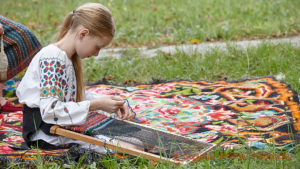 On October 5 and 6 this year, the wine is the big star in Chisinau, the capital of Moldova. It’s time for the annual National Wine Day. This is actually the eighteenth time this event is being held in Chisinau. It has grown in size of course. It is now an eagerly awaited opportunity for many wine lovers to try Moldova’s wines and meet the wine producers. During the two days you can sample wines from 60 different Moldovan producers. The three regions will be represented, Codru, Stefan Voda and Valul lui Traian and also the Moldovan brandy, called Divin, will be there. You can also taste the local food. If you want to go a little more in depth you can enrol in a master class or take a trip to a winery. Moldova is a small country and there are many wineries at a short distance from the capital. Many wineries have great restaurants where you can get even more acquainted with the local cuisine. These two days in October are a fabulous opportunity to really immerse yourself in the Moldovan wine culture. Read more about the National Wine Day in Chisinau National Wine Day in Chisinau.
On October 5 and 6 this year, the wine is the big star in Chisinau, the capital of Moldova. It’s time for the annual National Wine Day. This is actually the eighteenth time this event is being held in Chisinau. It has grown in size of course. It is now an eagerly awaited opportunity for many wine lovers to try Moldova’s wines and meet the wine producers. During the two days you can sample wines from 60 different Moldovan producers. The three regions will be represented, Codru, Stefan Voda and Valul lui Traian and also the Moldovan brandy, called Divin, will be there. You can also taste the local food. If you want to go a little more in depth you can enrol in a master class or take a trip to a winery. Moldova is a small country and there are many wineries at a short distance from the capital. Many wineries have great restaurants where you can get even more acquainted with the local cuisine. These two days in October are a fabulous opportunity to really immerse yourself in the Moldovan wine culture. Read more about the National Wine Day in Chisinau National Wine Day in Chisinau.
Features
Features that we have published during the past month, with lots of reading for you.
Sweden has a monopoly market. What do we think about it?
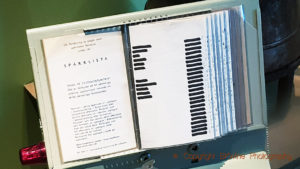 You might know that Sweden is a monopoly market for wine. Today, it is in fact the only monopoly that remains in Sweden. The monopoly on gambling was recently abolished. It is a bit of an aberration that the monopoly still exists. When Sweden joined the EU it should have been abolished. The EU does not allow monopolies, unless they are very well motivated. And Sweden managed to convince the EU that the monopoly is vital to Swedish public health. The monopoly is called Systembolaget, the government-owned retail chain. (Import is not a monopoly, but retail is.)
You might know that Sweden is a monopoly market for wine. Today, it is in fact the only monopoly that remains in Sweden. The monopoly on gambling was recently abolished. It is a bit of an aberration that the monopoly still exists. When Sweden joined the EU it should have been abolished. The EU does not allow monopolies, unless they are very well motivated. And Sweden managed to convince the EU that the monopoly is vital to Swedish public health. The monopoly is called Systembolaget, the government-owned retail chain. (Import is not a monopoly, but retail is.)
Curiously, the monopoly enjoys a very strong support among the public. This is perhaps less surprising if one takes into account that the monopoly spends million on propaganda, propaganda that “explains” how important the monopoly is for public health and, more importantly, describes the wine selection and service available in the Systembolaget shops as perhaps the world’s best. None of that is true, of course. Still, this means that few people criticize the monopoly in Sweden. Even many of the commercial importers are happy with the monopoly since they only have to deal with a single customer.
We, on the other hand, are a strong critic of the monopoly. We know that Sweden has far from the world’s best range (in fact, it is quite boring). And we believe that the public health would be better served without it. But many Swedish consumers criticise us for being so negative about the monopoly. They are convinced of the opposite. We have written a rather long article explaining why we think the alcohol retail monopoly is bad. If you are interested, you can use Google Translate and read the Swedish version. (The picture shows the “banned customers” list that was used in the monopoly shops until 1977 to bar “unsuitable” people from buying alcohol.)
Moldova, an exciting “new” wine country with a long history | Britt on Forbes
 Looking for a combined wine and gastronomy vacation? Looking for something adventurous and a bit off the beaten track? Try Moldova. This is probably not the first country that pops up in your mind. Some people may not even know it as a wine country. But it definitely is one. And an old one at that. Moldova has a little over 100,000 hectares of vines which actually means that the country has a bigger proportion of its land covered with vineyards than any other country. No wonder the wine industry is important for the economy. So why is Moldova not more well known for its wines? Its situation close to the Black Sea puts it near to where the first wines were made many thousand years ago. And yes, Moldova has a very long history of winemaking. But a long history, as illustrious as it may be, is not enough. Moldovan wines were hidden from the rest of the world for almost 50 years, when Moldova was part of the Soviet Union. But now it is back, with a vengeance.
Looking for a combined wine and gastronomy vacation? Looking for something adventurous and a bit off the beaten track? Try Moldova. This is probably not the first country that pops up in your mind. Some people may not even know it as a wine country. But it definitely is one. And an old one at that. Moldova has a little over 100,000 hectares of vines which actually means that the country has a bigger proportion of its land covered with vineyards than any other country. No wonder the wine industry is important for the economy. So why is Moldova not more well known for its wines? Its situation close to the Black Sea puts it near to where the first wines were made many thousand years ago. And yes, Moldova has a very long history of winemaking. But a long history, as illustrious as it may be, is not enough. Moldovan wines were hidden from the rest of the world for almost 50 years, when Moldova was part of the Soviet Union. But now it is back, with a vengeance.
Read more on Britt’s article on BKWine Magazine, originally published on Forbes: Moldova, an exciting “new” wine country with a long history | Britt on Forbes
Favourite Bordeaux Restaurants And Wine Bars | Britt on Forbes
 Bordeaux is definitely worth visiting, even if you are not a wine fanatic. Lately, we have discovered some very interesting restaurants and wine bars. So even if you are out touring the chateaux and the vineyards during the day, you will have no problem finding somewhere to spend your evenings.
Bordeaux is definitely worth visiting, even if you are not a wine fanatic. Lately, we have discovered some very interesting restaurants and wine bars. So even if you are out touring the chateaux and the vineyards during the day, you will have no problem finding somewhere to spend your evenings.
Read more on Britt’s article in BKWine Magazine, originally published on Forbes, on our selection: Bordeaux restaurants and wine bars: oysters, mussels, foie gras, duck and much more in the gastronomic city | Britt on Forbes.
Travel: Come to Bordeaux on a wine tour this autumn.
Our book on the wines of the Languedoc-Roussillon wins prestigious award from the OIV
 We worked for two years on the new book about Languedoc-Roussillon. Not full time, but when we could, and not least in the summers when we could go and visit vineyards. But on top of that, we had worked continuously for about ten years, since our first book on Languedoc, to collect material about the wines and the producers. We found many new and exciting wineries; we probably tasted several thousands of wines. With so much work and effort invested, one is happy when the result is appreciated. And we were happy when we just recently received the news that the book “Languedoc-Roussillon, the Wines of Southern France” won a prize in OIV’s 2019 book awards competition. We won in the category “Discovering and presenting wines”.
We worked for two years on the new book about Languedoc-Roussillon. Not full time, but when we could, and not least in the summers when we could go and visit vineyards. But on top of that, we had worked continuously for about ten years, since our first book on Languedoc, to collect material about the wines and the producers. We found many new and exciting wineries; we probably tasted several thousands of wines. With so much work and effort invested, one is happy when the result is appreciated. And we were happy when we just recently received the news that the book “Languedoc-Roussillon, the Wines of Southern France” won a prize in OIV’s 2019 book awards competition. We won in the category “Discovering and presenting wines”.
Read more in the article on BKWine Magazine, including the full list of winners: Our book on the wines of the Languedoc-Roussillon wins prestigious award from the OIV.
Uncorked: Good wines we have tasted recently, July 2019
 Uncorked: Under this heading, we collect various wines that we have tasted, and liked, recently.
Uncorked: Under this heading, we collect various wines that we have tasted, and liked, recently.
This month: Some fabulous old Bordeaux reds, a legend from Spain, a couple of Chenin Blanc wines that confirm the deliciousness of this grape, a natural wine from Gaillac in the south-west of France, a Ribera del Duero from superstar Peter Sisseck, an early vintage of one of the most famous Douro red. And Moldovan wines, whites from Languedoc and Bergerac and some more.
Read more in Britt’s article on BKWine Magazine: Uncorked: Good wines we have tasted recently, July 2019.
Wine tours
Some information about current and future wine tours with BKWine.
Champagne should be served in the right glasses | wine tour
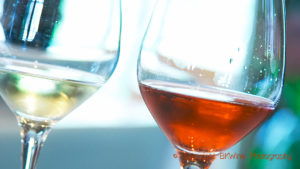 If you order a glass of champagne in France, you often ask for “une coupe de champagne”. A coupe is – in principle – the big champagne glass, shaped like a flat bowl and pretty hopeless to drink from. It was popular in the old days but actually it has made a small comeback. But ordering a coupe does not mean you will get such a glass. “Une coupe de champagne” is just en expression meaning a glass of champagne. More likely you will get a narrow “flute” glass and you really don’t want that either. This is not a perfect champagne glass either, as it is almost impossible to feel any aromas. The best glass is just a plain tulip-shaped glass, a normal wine glass. When visiting growers in Champagne, that’s often the glass you get to taste in. In such a glass aroma and flavours come into their own. So do like the pros, experience champagne in the right glasses – on our Champagne wine tour this fall.
If you order a glass of champagne in France, you often ask for “une coupe de champagne”. A coupe is – in principle – the big champagne glass, shaped like a flat bowl and pretty hopeless to drink from. It was popular in the old days but actually it has made a small comeback. But ordering a coupe does not mean you will get such a glass. “Une coupe de champagne” is just en expression meaning a glass of champagne. More likely you will get a narrow “flute” glass and you really don’t want that either. This is not a perfect champagne glass either, as it is almost impossible to feel any aromas. The best glass is just a plain tulip-shaped glass, a normal wine glass. When visiting growers in Champagne, that’s often the glass you get to taste in. In such a glass aroma and flavours come into their own. So do like the pros, experience champagne in the right glasses – on our Champagne wine tour this fall.
Read more about the Champagne wine tour, 11-15 September 2019. Book now!
Top-quality wines and gastronomic food in South Africa | wine tour
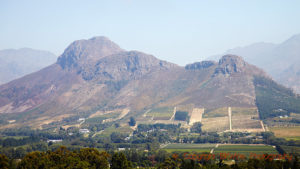 South Africa is a wonderful place to visit. On our wine tour in February we will take you to some of our favourite places. Many of the South African vineyards are located within easy reach from Cape Town. After an hour’s drive east you reach Stellenbosch, the biggest and most famous of the wine regions. Not far from there you have Franschhoek (“the French corner” in Afrikaans), and Paarl. We will also go a little bit further, to the south coasts and the regions of Elgin and Walker Bay. These cool-climate regions are among the “hottest” in the country today. Here we will stay in the quaint little town Hermanus. South Africa has an unfortunate reputation for easy drinking inexpensive wines. Many producers have since long realised its potential for international top-quality wines. Now, consumers are following and falling in love with these superb wines. Expect some great wine tastings as well as gastronomic meals at the wineries. And you will also get to see the sights in Cape Town! South Africa is worth a trip! Come with us in February!
South Africa is a wonderful place to visit. On our wine tour in February we will take you to some of our favourite places. Many of the South African vineyards are located within easy reach from Cape Town. After an hour’s drive east you reach Stellenbosch, the biggest and most famous of the wine regions. Not far from there you have Franschhoek (“the French corner” in Afrikaans), and Paarl. We will also go a little bit further, to the south coasts and the regions of Elgin and Walker Bay. These cool-climate regions are among the “hottest” in the country today. Here we will stay in the quaint little town Hermanus. South Africa has an unfortunate reputation for easy drinking inexpensive wines. Many producers have since long realised its potential for international top-quality wines. Now, consumers are following and falling in love with these superb wines. Expect some great wine tastings as well as gastronomic meals at the wineries. And you will also get to see the sights in Cape Town! South Africa is worth a trip! Come with us in February!
South Africa, February 15-23, 2020. Book your wine tour to South Africa now!
Kia Ora! Welcome to New Zealand | wine tour
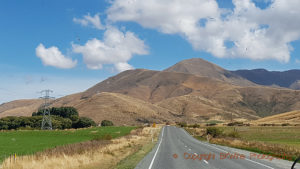 Kia Ora is a word that you will learn pretty quickly. It means welcome in Maori. And during the course of this journey you will probably learn more words than one, although some are quite tongue-twisting. You’ll see Maori words everywhere in the country, for example in the Wairarapa and Waipara wine regions (a challenge to remember which is which). During our days in New Zealand, we will learn a lot about the Maori culture, the history of the country and the special and spectacular sceneries. But of course, the emphasis is on the wine and on the food. We start in Auckland on the North Island and go by bus (and ferry) all the way down to Queenstown on the South Island. A wonderful trip that gives us a good understanding of the country and the different wine styles. And you’ll see a few seals on the way and maybe a kiwi. Join us on this unforgettable adventure with wine, food, geysers and glaciers. Travel to New Zealand with us this winter (summer in NZ!).
Kia Ora is a word that you will learn pretty quickly. It means welcome in Maori. And during the course of this journey you will probably learn more words than one, although some are quite tongue-twisting. You’ll see Maori words everywhere in the country, for example in the Wairarapa and Waipara wine regions (a challenge to remember which is which). During our days in New Zealand, we will learn a lot about the Maori culture, the history of the country and the special and spectacular sceneries. But of course, the emphasis is on the wine and on the food. We start in Auckland on the North Island and go by bus (and ferry) all the way down to Queenstown on the South Island. A wonderful trip that gives us a good understanding of the country and the different wine styles. And you’ll see a few seals on the way and maybe a kiwi. Join us on this unforgettable adventure with wine, food, geysers and glaciers. Travel to New Zealand with us this winter (summer in NZ!).
New Zealand, March 9-24, 2020. Book your wine tour to New Zealand now!
Don’t be an egoist! Share with your friends and other wine enthusiasts! Forward the Brief to your friends! Suggest that they sign up for a free subscription !
© Copyright BKWine







